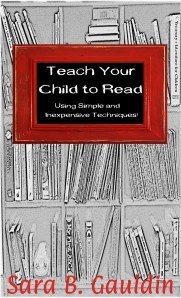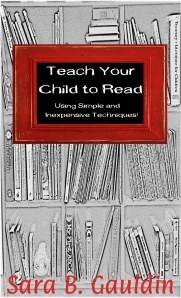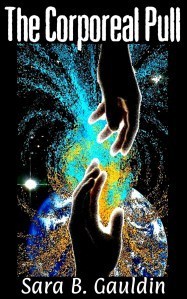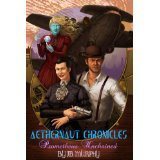Sara B. Gauldin's Blog, page 9
March 4, 2014
Teach Your Child to Read – Coming Soon to eBook Format!
I am in the process of compiling my blog posts, plus some bonus content into an eBook that chronicles the process of teaching a very young child the specific skills they will need to become literate. As I wrap up this series of posts I will limit a few of the posts, but I will continue to add to the series with my next topic, Teaching Reading Comprehension! I will be releasing the links and special offers on the eBook with in the next few days! I am very excited to take this next step with my little project!
Speaking of education, my blog will be hosting the writing of two young authors over the next few weeks. These two young men have put an enormous amount of time and effort into their work, and I am excited to share it!


February 20, 2014
My child can read lots of books, but I’m not sure they understand what they read. Teach you Child to Read!
As your child has become a literate person your entire focus has been on “cracking the code” of characters and phonics. This has been a major task, but calling out the words is only half of “reading.” Children need to learn how to process the words that they have read so that they can use the information. When an adult reads, they reflect on the meaning of the words. Reading a letter from a friend allows the reader to catch up and communicate. Reading a bill allows the adult reader to understand an obligation. Reading a novel allows the mature reader to enter the story and view it using their imagination. As the story unfolds a mature reader can follow the plot, make predictions, and picture the characters and setting of the story. Most adults see this level of processing and comprehension as intuitive. They internalize and process the text without really thinking about what they are doing. It seems like a very natural thing, but in reality, reading comprehension is a learned skill and set of behaviors. The skills your child will use for comprehension in a school setting will become very specific and directed. As a child begins to read, asking the right kind of questions and leading a child to discuss the material, they are reading is an excellent way to use your child’s natural curiosity to harness to attain a better understanding of the written word!
Many of these strategies work well with younger children who are being read to as well.
Try This!
Before reading a story, take your child on a picture walk. This means looking at each illustration with your child and asking him or her to describe what they see. Ask questions about the picture and point out any captions. If the illustration shows characters or setting, be sure to point out any information that they might share about them.
Read stories more than once. Repetition is helpful for building fluency or smooth and meaningful reading at a steady pace. If your child is trying to break down each word, it is difficult for them to focus on what the words are actually saying.
Ask your child these types of questions to make sure they understand what they read!
-Where does the story take place?
-When does the story take place?
-Who are the characters?
-Tell me about the character…
-What is the title of the story? How can you tell?
-What is this story all about?
-Did the story end the way you thought it would? Why or Why Not?
-What is the problem in this story?
-What would you do solve the big problem in this story?
-How would you describe the main character?
-What parts of the story could really happen?
-What parts of this story are make believe?
-Describe the most fun part of this story.
-Why do you think the author wrote this story? To entertain you (give you a fun story to enjoy), to persuade you (to convince you think a certain way) or to inform you (to give you real facts)
-What happens at the beginning of the story?
What happens at the middle of the story?
-What happens at the end of the story?
-Have your child tell what happens in order using words like first, next, then and last.
-What happens before …?
-What happens after…?
-Tell me about this picture.
-Choose a tricky or new word and have your child decide what it might mean based on the sentence or paragraph.
-Point out sentences that begin with capital Letters and end with punctuation.
-Point out where paragraphs begin and end.
Ask your child to come up with questions to ask you about the story. This makes the child recall the text and process it to formulate the questions!


Now is your chance to download The Corporeal Pull for free!
After careful consideration, I have decided to offer my latest book, The Corporeal Pull for Free! This is a limited time offer. The book is only free on February 21, 22,23.
The Corporeal Pull is a story of love that transcends both time and the mortal plane. Terra, a guiding spirit of the Tweens, was content to manage her corporeal charges on Earth and help them towards their divine purpose until she was faced with Liam. The strange attraction she feels towards this lone entity forces her to reexamine the narrow perspective she has held for centuries. Suddenly, the relevance of soul mates is thrust into the forefront of her thoughts, and she cannot deny their relevance.
When Terra realizes that Liam’s intended path is one of incomprehensible suffering in the mortal world, it is already too late. She has let herself become entangled in his fate. Terra is faced with an impossible quandary; how can she knowingly send her love to a human lifetime where he is meant to be sacrificed to slow the flow of evil in the world?
She realizes that without Liam, her immortal existence will become one of never-ending pain. If Liam cannot continue his existence; than neither will she. Things do not go according to her plan!
This epic tale of good versus evil seeks to answer the age-old question of “why me” that all earth-bound travelers must eventually ask about their own life experiences. This action-packed love story will invite you in and leave you breathless!


February 15, 2014
An Exciting New Review of The Corporeal Pull
I am pleased to share this exciting new review of my novel, The Corporeal Pull! The book has been featured on the active book blog The Pegster Reads by Ms.Peggy Farooqi! I would like to thank her for donating her time and her willingness to read my book.
http://thepegsterreads.blogspot.com/2014/02/review-corporeal-pull-by-sarah-gauldin.html?spref=tw&m=1


February 14, 2014
My Review of Journey into the Mystic by Jesse G. Christiansen
This book chronicles the journey of a young, college aged, man who has made a terrible mistake. After striking an unusual child with his car, he chooses to conceal the remains rather than risk a reporting the incident. This pivotal decision catapults the protagonist, Joel into an action-packed adventure that is wrought with very human needs, and shortcomings interlaced with an element of paranormal influence. The vivid descriptions and naturally evolving characters serve to anchor this read in a well-developed plot that never leaves a dull moment! The book contains elements of mystery, romance, action and the paranormal and science. I would recommend this book to anyone who is looking for a good read!


February 12, 2014
Indie Book of the Day
I’m excited to announce that To Conspire received the Indie Book of the Day Award today! I’m beyond thrilled!
http://indiebookoftheday.com/to-conspire-by-sara-b-gauldin/


February 3, 2014
Stolen Moments
The writing world will swallow you up if you allow it to. I find myself trying to find a balance between writing and my daily existence and failing miserably! Writing and then marketing that creation time is consuming and for me the introvert a welcome distraction from everyday life that wears me out and uses me up. I say that I failed because I did not keep that balance of wife, mom, teacher, author that I thought I was managing quite well. At this point, writing has been relegated to stolen moments and my lunch break. I do not feel that it is wise or advisable to give up on my writing career as it its beginning. I will just have to be more conscientious of other people’s needs before I allow myself to be swept into a world of introverted and imaginary bliss.
That being said, I have made a new discovery. Writing in quick and intense bursts is not necessarily a bad thing. I have found that my word count is growing on my sequel for The Corporeal Pull quite nicely. My editing and reworking time is really where I am making the most cuts. In the long run, that is alright. I can use summer break to rework my chapters, so long as I have managed to produce the chapters as I go.
Speaking of which, I have a few moments now and a chapter that is dying to be written!
A few quick updates:
I recently chose to join the Independent Author Network. My work is featured at:
http://www.independentauthornetwork.com/sara-gauldin.html
I also was featured on the Clean Indie Read blog:
http://cleanindiereads.blogspot.com/2014/01/the-corporeal-pull.html
Check this blog out for awesome flinch-free fiction and a great group of talented authors!


January 29, 2014
My Review of Aethernaut Chronicles by JB Murphy
This book is a classic example of what is known as the “steam punk” genre. It is completely packed with copious layers of extreme action that are spun around elements of the metaphysical and an intricate scaffold of inter-relating characters that all culminate in a master plot. There was never a lull in this book!
The characters were extremely visceral; they provoked emotions in a wide range from repulsion to endearment.
I found the choice to incorporate fictional facsimiles of actual historical characters interesting. These “real life” characters did serve to keep a fantastic story grounded in the realm of plausible.


Teach Your Child to Read: How do I put it all together?
If you have been reading to your child throughout this process, if your child knows the letters and letter sounds, at least thirty sight words and can identify word family words, then it is time to begin to read authentically. There is no magic trick to make this transition. If a child has learned all the essential components to reading, they are ready to apply them. This can be a bit intimidating at first. Children need support during these early reading attempts (and throughout their school careers).
Before you hand your child a book, make sure the material is appropriate for his or her reading level. If your child is school aged you may try asking your child’s teacher what your child’s reading level is. They will most likely be able to give you an immediate answer. If you are not sure, then assume that your child is beginning on a kindergarten or primer level. It is better to start too low and build confidence that too high and build frustration.
Find a few books that look fairly simple. You want to find interesting books with good pictures. Try to find materials that are about topics your child is already interested in. You want to foster a true love of reading my making the experience pleasant and inviting. If you do not have a supply of reading material at home, take a trip to your local library. Your librarian will be able to help you choose books.
To find a better picture of specifically what reading level a certain book is meant for, you can use the Accelerated Reader tool http://www.arbookfind.com/UserType.aspx to look up the book by title or author and find a number ranking. Use the parent login. For example, I keyed The Very Busy Spider into the search box. The site returned the results that read IL: LG – BL: 1.3 – AR Pts: 0.5. You are looking for the number 1.3. This indicated that a child reading on a first grade, third month level should be able to read the book with support without becoming frustrated. The AR Pts. notation is only referring to how many points a child would earn if they took a quiz on the book at a participating school. If your child is just learning to read, stay in the 0. 1 to 1.5 range of books when you have your child read to you. It is fine to check out more difficult books to read to your child. Their listening comprehension should be much higher than their ability to read independently.
Before reading any book, talk about the cover with your child. Read them the title and author’s name. Talk about the picture. Ask, “What do you think this book will be about?” or “Do you think this book will be real or make believe?” Listen to your child’s comments about the cover and let them lead the conversation after they have answered your questions. Have your child look at the pictures through the book. Talk about any concept that they can’t identify. Comment on the characters and their expressions. What kind of mood is the character in? Pay close attention to pictures showing action. Have your child make predictions about what they think the story may be about.
With a brand new reader it is permissible to read the story to the child after your initial picture walk. This is also viable for readers who are a little older and who are struggling. When a child’s confidence in their ability to read a book is low, pre-reading the story to them can give them the peace of mind of not charging headlong into unknown territory.
Most readers will be ready the “echo read” the story after the picture walk and possibly being read to. As the name suggests, echo reading is when the adult reader reads a phrase, then the child says the words aloud after the adult while tracking each word with their finger. Do not attempt to squeeze in long sentences into one chunk. A child has a short working memory. A four or five word section is enough for one piece. I use the amount I can say in one breath as an indicator. As you read, model the way you would like for your child to read. Add expression and emotion. Honor punctuation, it is important when gleaning meaning from the text. Do not be tempted to read word by word or in a robotic way. Remember, you are competing with screen time, if you bore the child; you lose their effort towards anything but dodging the experience.
After reading the story put it aside. Revisit again in another sitting. It is important for children to feel joy in the time spent reading and not feel they are being punished in any way. It is a valid method to ask the child to choose a second story to read together after the adult chosen selection. If you allow your child to choose, ask him or her to choose from the titles they have already read. By re-visiting stories and repeated reading your child will gain independence, confidence and most critically reading fluency.
After more than one sitting with an echo read your child should be ready to read chorally. This means that you both read the story together. This gives the beginning reader a little support for confidence while allowing them a bit more accountability while they practice. Again, have your young reader put their finger under each word as they read. This gives you an idea if they are authentically reading the word they are saying and makes them accountable to match the words they are saying with the ones they touch.
When you see that your child is pulling away as they read it is time to retire to “active listener” (at least in regard to the story they have been practicing). Your child still needs to read aloud. They still need to be encouraged to track the words they read with their finger. The child needs to be accountable for reading aloud with accuracy. Now is not the time to cut the child lose to read silently. Many children will stop reading entirely when asked to read in silence. They will dutifully look at each page, but no actual word decoding or recognition will be taking place. Older children enjoy reading silently. Beginning readers are still mapping the relationship between the written word and the spoken word in their minds. Often young children who read to themselves will say the words quietly to themselves as they read (this is known as whisper reading). This is a developmentally appropriate practice.
Try This!
If your child is losing their place on the page, cover part of the page with a folded paper or note card. Move the page down as they read each line.
If your child runs out of focus before they run out or pages it is acceptable to split the story up. Try reading half now and half later. You the adult can read one page alternately as the child reads the other page.
Use repetition and practice to build reading confidence. By reading the same stories over and over children increase their sight words recognition and fluency.
Use the story to build phonics. When your child reaches an unfamiliar word encourage them to sound the words out using the phonics features they have already learned. This process can also be used in reverse; as you introduce a phonics feature, have your child find and read words that use that specific spelling and sound in the story they are reading.
Use PVC pipe to create a “whisper phone.” This is a great tool that can be used to allow children to read aloud to themselves when they are ready for independent practice.
Children enjoy reading about the things and characters they already enjoy. If your child is reluctant try finding reading materials in the form of books or magazines that feature the things that already hold their interest.
Children like to share. After building confidence reading with you, your child may be encouraged to continue reading if they are reading to a sibling, pet, stuffed animal or friend.


January 22, 2014
Come With Me Now on a Journey Through Time & Space: The Corporeal Pull by Sara B. Gauldin
 Reblogged from Lipsyy Lost & Found:
Reblogged from Lipsyy Lost & Found:
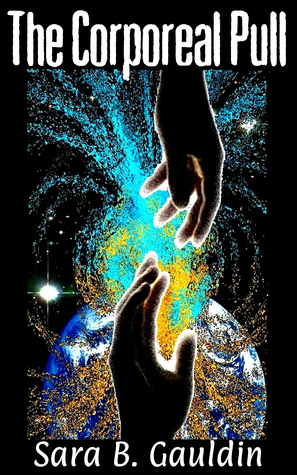

The Corporeal Pull is a story of love that transcends both time and the mortal plane. Terra, a guiding spirit of the Tweens, was content to manage her corporeal charges on Earth and help them towards their divine purpose until she was faced with Liam. The strange attraction she feels towards this lone entity forces her to reexamine the narrow perspective she has held for centuries.
Thank you for taking the time to read and review The Corporeal Pull!

